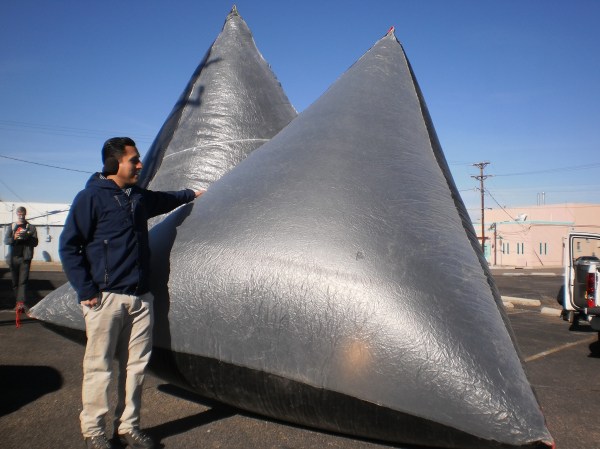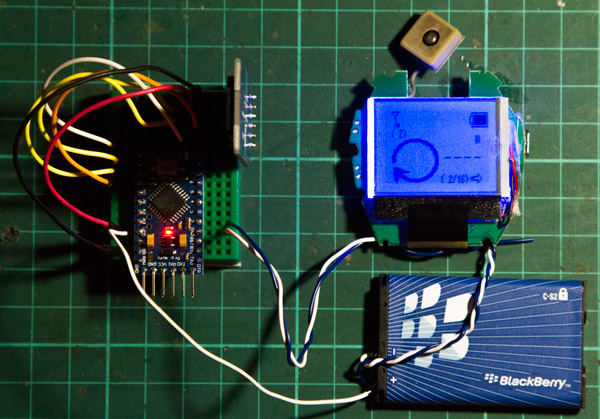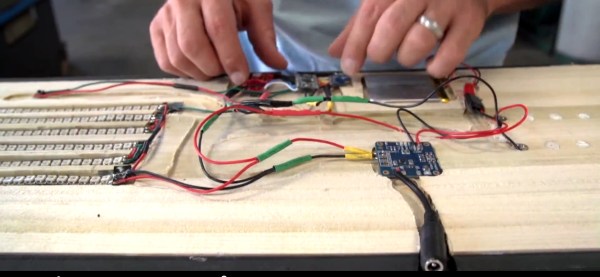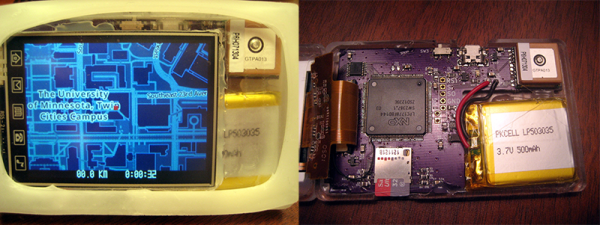An interesting take on Hackerspace outreach is spooking the local community into calling the FAA and even the Air Force. It wasn’t exactly the plan at Quelab, but after an experimental solar tetroon got away from [Gonner Menning], one of the space’s members, that’s exactly what happened.
This is the first we remember hearing of solar tetroons. A tetroon is actually a fairly common weather balloon design using four triangle-shaped pieces. The solar part is pretty neat, it’s a balloon that uses the sun to heat air inside of a balloon. Instead of filling the bladder with a lighter-than-air gas it is filled with regular air and the sun’s rays heat it to become lighter than the surrounding ambient air.
For this particular flight the balloon was never supposed to be off the tether. Previous iterations had turned out to be rather poor fliers. Of course it figures that when [Gonner] finally tuned the design with an optimal weight to lift ratio it slipped its leash and got away. The GPS package tracked it for quite a while but ended up dying and the craft was nary to be found.
We weren’t going to embed the local news coverage video, but at the end the talking heads end up rolling around the word “Hackerspace” in their mouths like it’s foreign food. Good for a giggle after the break.

















